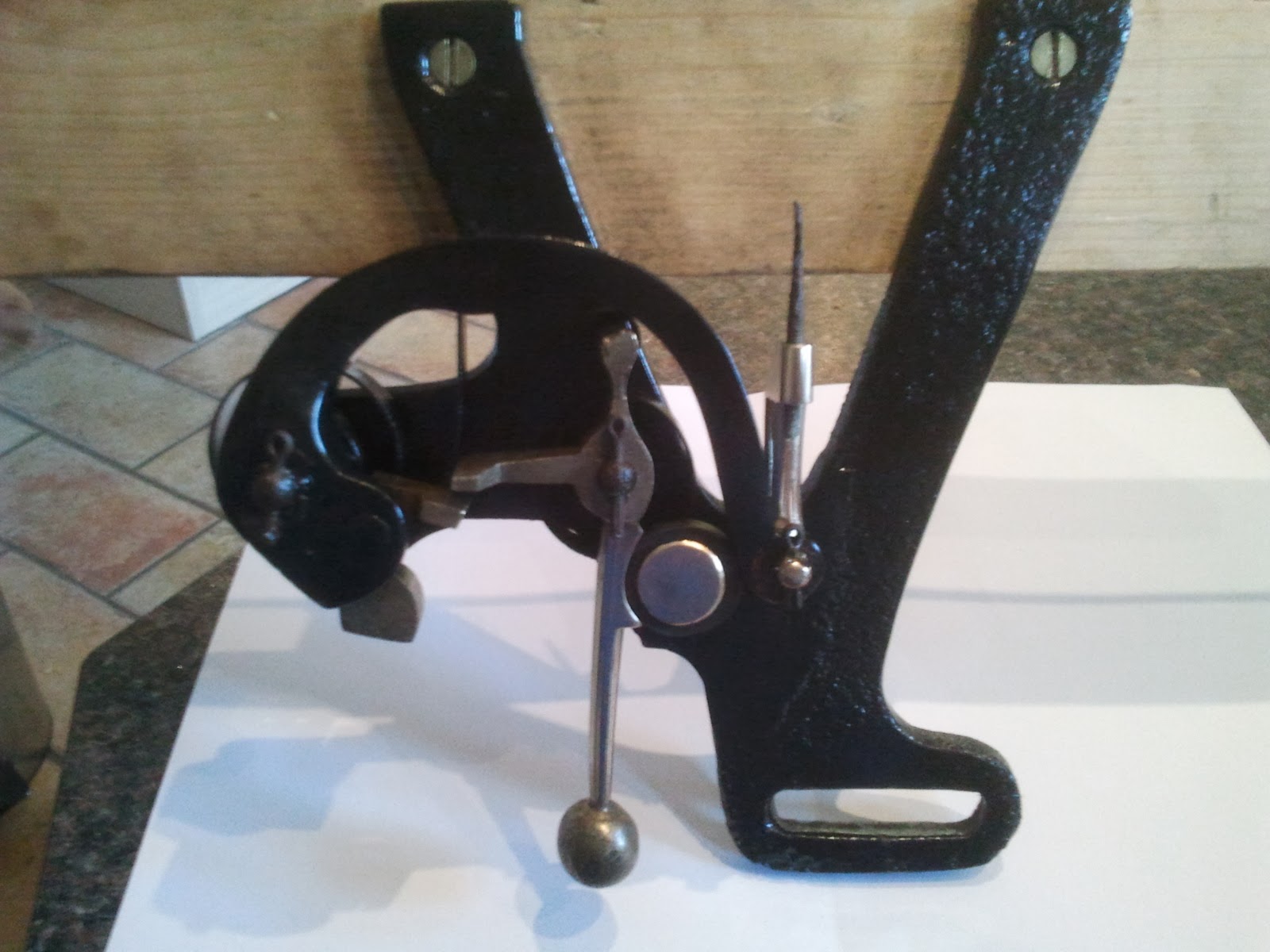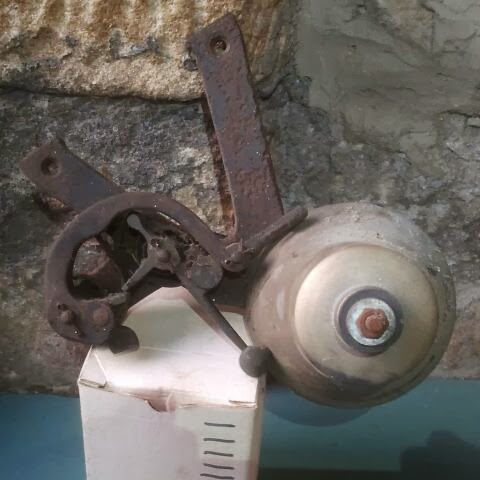A good number of years ago we had a case of disappearing bells. The small bells used on our Seage's Silent Ringing Apparatus are the same as handbells, we think that someone, or possibly the whole band, decided that the bells would be better off the wall mounts and being used as handbells. So the bells were removed from the brackets and shipped to Taylors the bell founders in Loughborough, to be converted or made into handbells. I'm not sure of the exact date when the above took place, if anyone reading the blog does know when the Whittle-le-woods Seage's bells were removed please let me know, it was quite a while ago around the late 1960's. The last information we have on them is an invoice from John Taylor and Co. for the cost of postage for return of the Handbells to Dalton Lodge, Whittle-le-woods, Lancashire We are fairly sure that these would have been the completed conversion into Handbells.
The bells which we have now are a replacement set of eight, purchased second hand from a Mr. Flatters at John Taylor and Co in November 1987, at a cost of £50; quite a bargain I think.
Edit
PS
I've found a letter, dated 24th February 1987, from Mr. Gerald A Flatters of John Taylor and Co. The second page dealt with a query regarding the Seage's Bells;
"With regard to the Whittle-le-Woods Seage's apparatus, I have carefully gone through the details and find that the bells were delivered to our Works in November 1969. On the 17th december of that year we wrote to Mr. Peter R Jackson giving details of the work that would be required to convert these to handbells. On the 30th January, 1970 the bells were returned by post to Mr. Jackson - see enclosed photocopy from our records. This was the last involvement we had with these bells."






